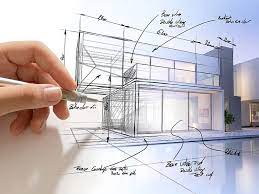Introduction

Architectural design stands at the crossroads of creativity and pragmatism, shaping the contours of our built environment. It’s a discipline that not only defines the skyline of our cities but also influences the minutiae of our daily lives. This article delves into the essence of architectural design, exploring its importance, process, and the evolving landscape shaped by emerging trends and sustainability concerns.
Understanding Architectural Design
Architectural design is an art and science dedicated to creating structures that are both aesthetically pleasing and functionally apt. It differs from architecture in that it focuses solely on the design aspect, leaving the broader scope of construction and project management to the broader field of architecture. An architect brings visions to life, ensuring that buildings meet the necessary safety and regulatory standards, while an architectural designer concentrates on the aesthetic and functional aspects without the obligation to navigate the complexities of building codes and structural integrity to the same extent.
The Importance of Architectural Design
The significance of architectural design lies in its dual focus on functionality and aesthetics. It influences how we interact with spaces, affecting everything from productivity in workplaces to comfort in homes. Moreover, architectural design plays a pivotal role in environmental sustainability, with the power to dictate a building’s energy efficiency and ecological footprint.
The Architectural Design Process
The design process in architecture is iterative and collaborative, involving stages from conceptualization to detailed design development. Central to this process is the client’s vision, which guides the project towards its final manifestation. This journey is marked by constant dialogue between the designer and the client, ensuring that the outcome aligns with the envisioned purpose while also adhering to practical constraints and regulatory requirements.
Key Elements of Architectural Design
The essence of architectural design lies in its key elements:
- Aesthetics: The visual appeal of buildings can significantly impact our psychological well-being and mood. Architectural design employs proportions, materials, and colors to create harmonious spaces.
- Functionality: A well-designed building serves its intended purpose efficiently, catering to the needs of its users with ease of movement and accessibility.
- Sustainability: Incorporating green design principles, such as energy-efficient lighting and natural ventilation, is becoming increasingly important in minimizing environmental impact.
- Technological Integration: Modern architectural design embraces technology, using smart systems for energy management, security, and user comfort.
Challenges in Architectural Design
Architectural designers often navigate a tightrope between aesthetics and functionality. Adhering to building codes and environmental regulations adds another layer of complexity. Moreover, the quest for sustainability demands innovative approaches to minimize carbon footprints and promote green building practices.
Emerging Trends in Architectural Design
The field of architectural design is witnessing several transformative trends:
- Material Innovation: New, sustainable materials and construction techniques are revolutionizing how buildings are constructed, offering improved durability and environmental performance.
- Sustainable Design: There is a marked shift towards eco-friendly designs that prioritize energy efficiency, water conservation, and the use of renewable resources.
- Smart Buildings: Automation and smart technology integration are enhancing building functionality, energy management, and occupant comfort.
Expertise in Architectural Design: Case Studies
Exploring case studies of iconic projects reveals the depth of expertise required in architectural design. These projects showcase innovative solutions to design challenges, demonstrating how architects and designers navigate complex requirements to deliver functional, aesthetic, and sustainable outcomes. Such case studies serve as a rich source of inspiration and learning for professionals and students alike.
The Future of Architectural Design
The future of architectural design is likely to be shaped by advances in technology, sustainability pressures, and changing human needs. Designers will need to be agile, adapting to new materials, construction methods, and environmental challenges. As we move forward, the integration of green spaces, community-centric designs, and resilience against climate change will become increasingly important.
Conclusion
Expertise in architectural design is more than just the ability to create visually appealing structures; it’s about crafting spaces that enhance human experience, promote sustainability, and stand the test of time. As we look to the future, the field of architectural design holds the promise of creating a built environment that harmonizes with nature, supports community well-being, and inspires future generations.
